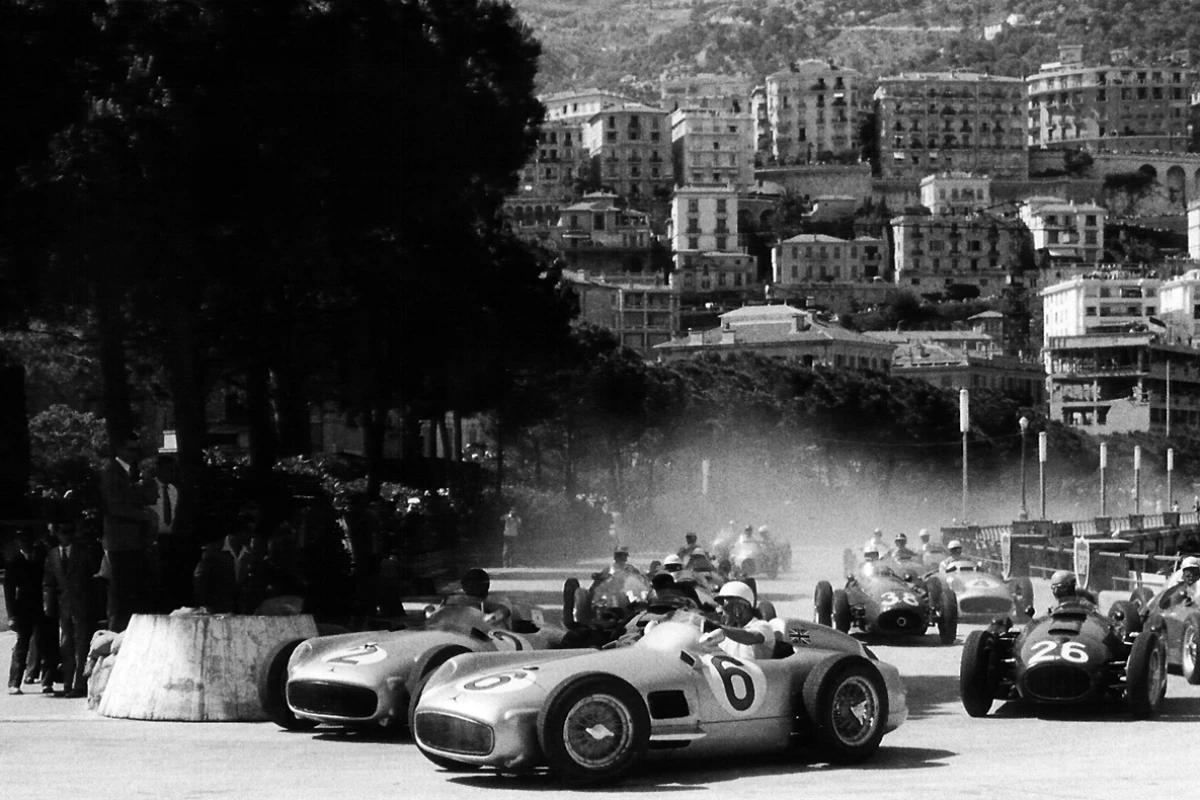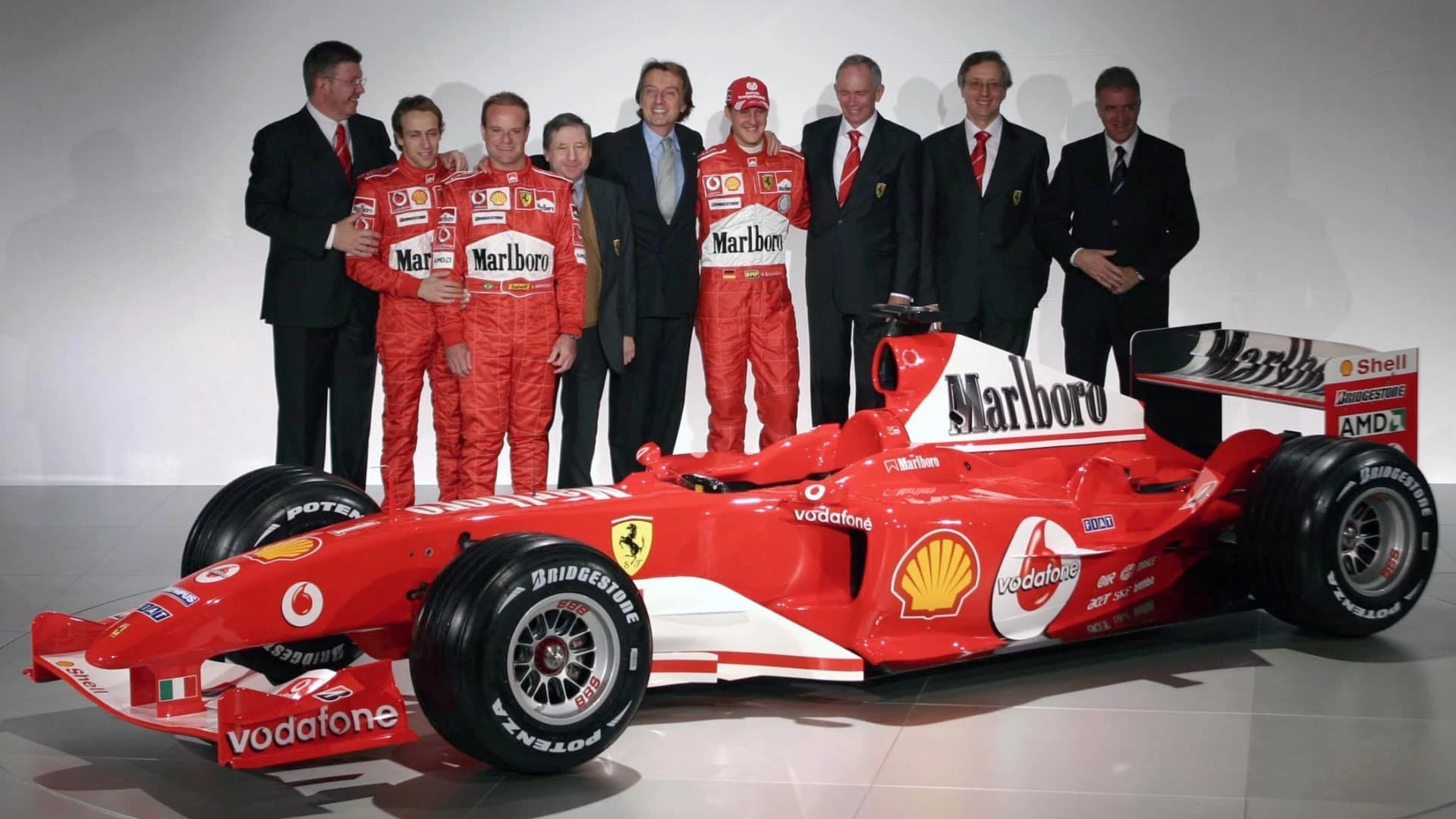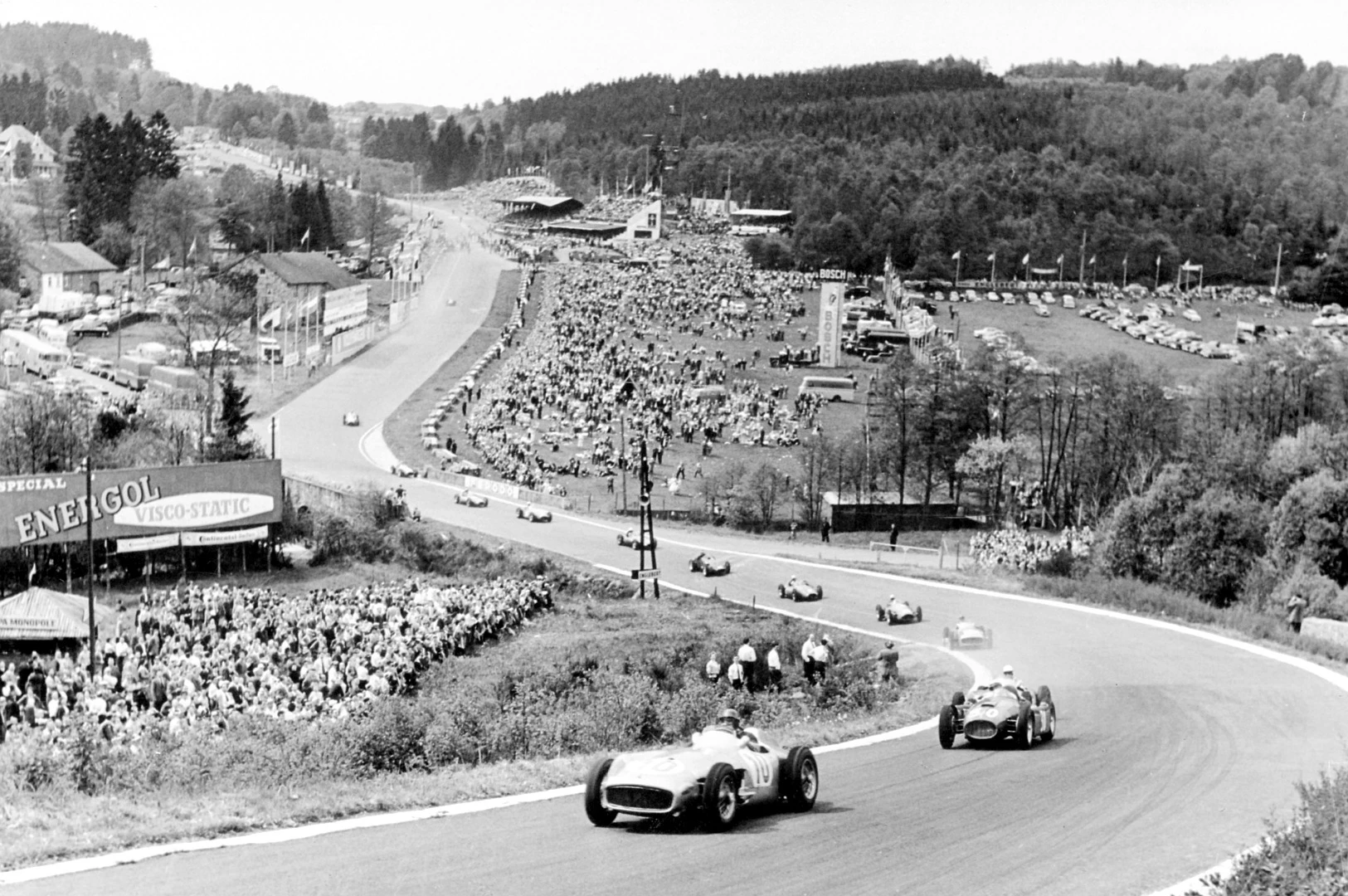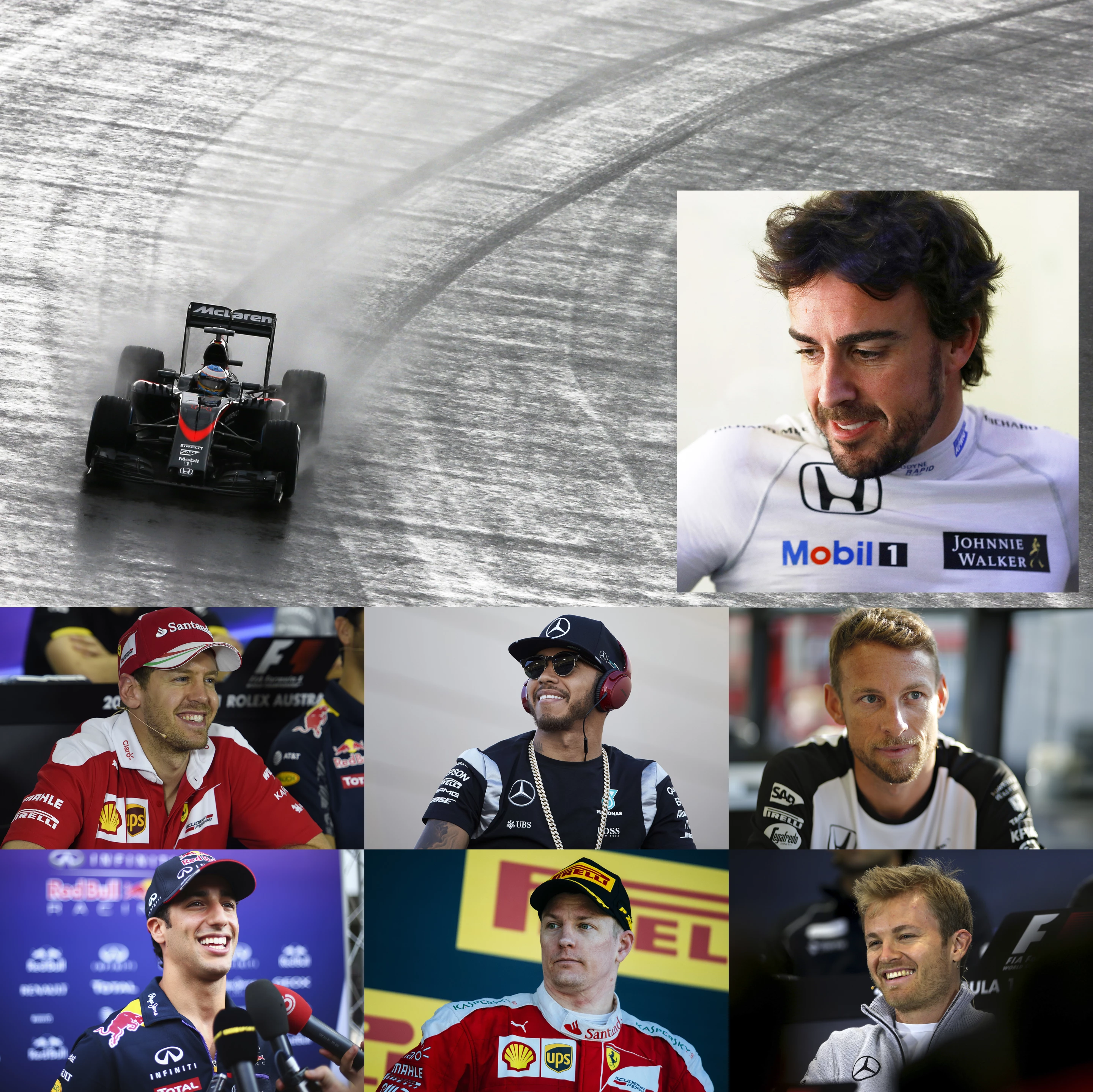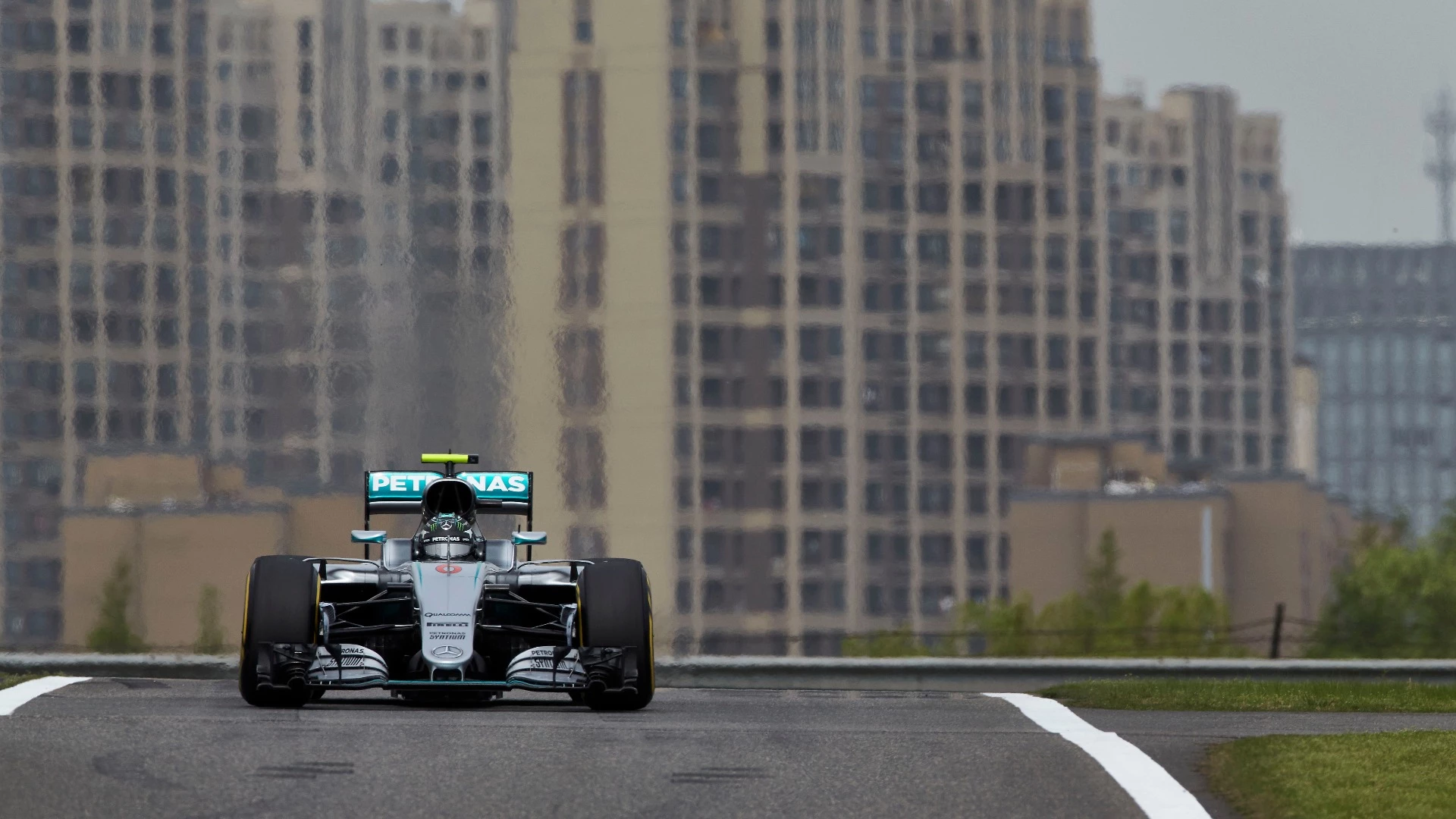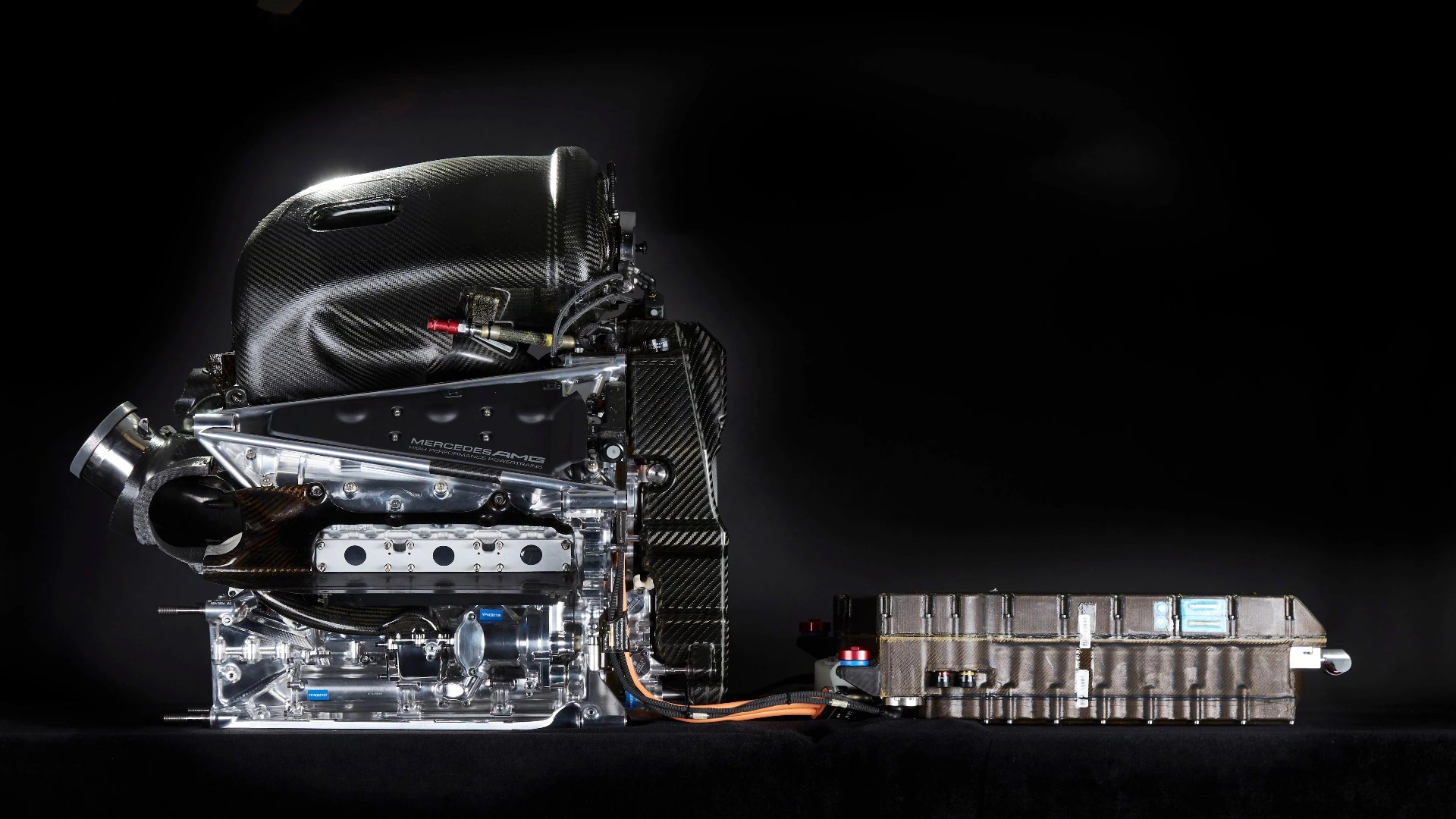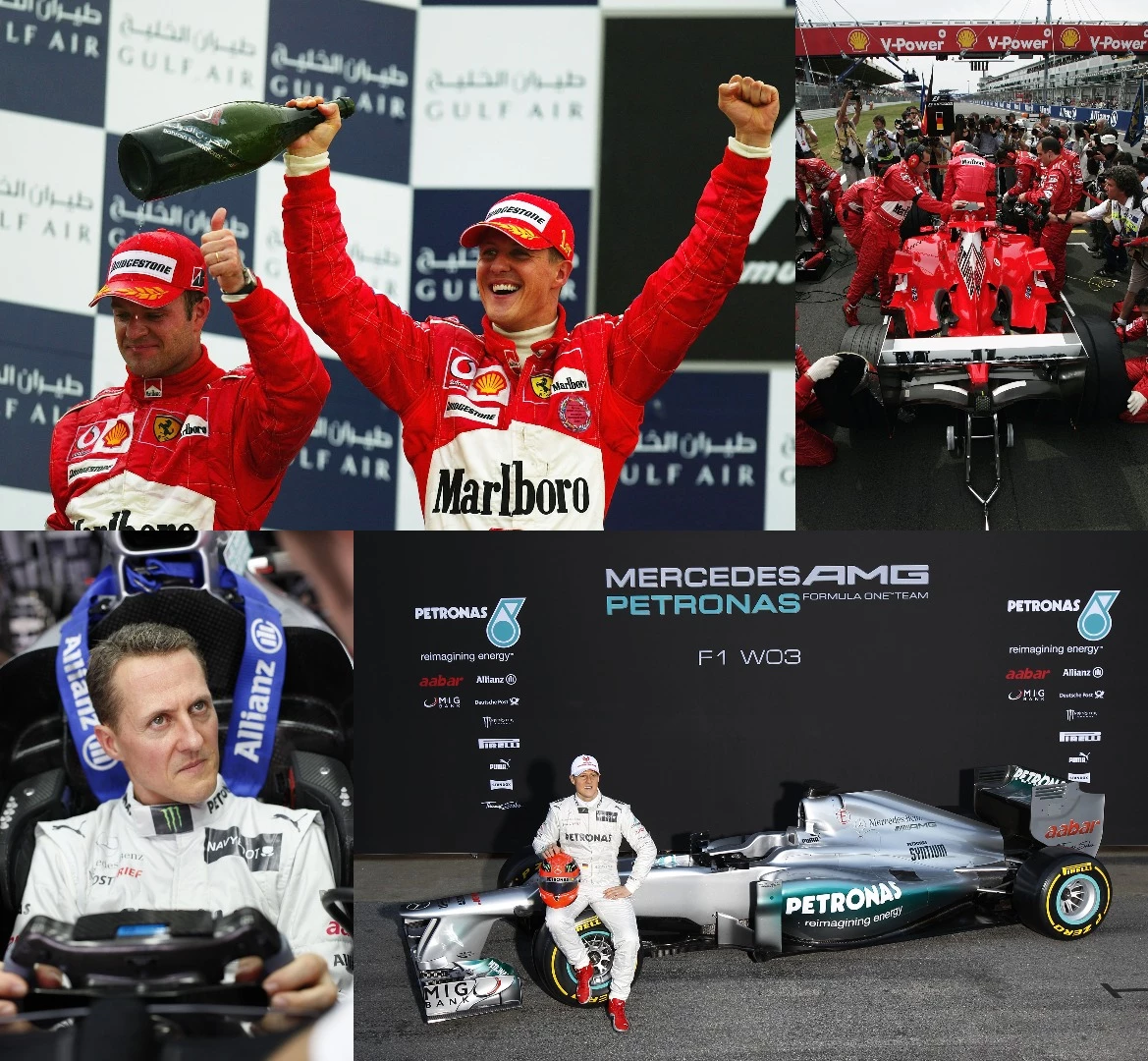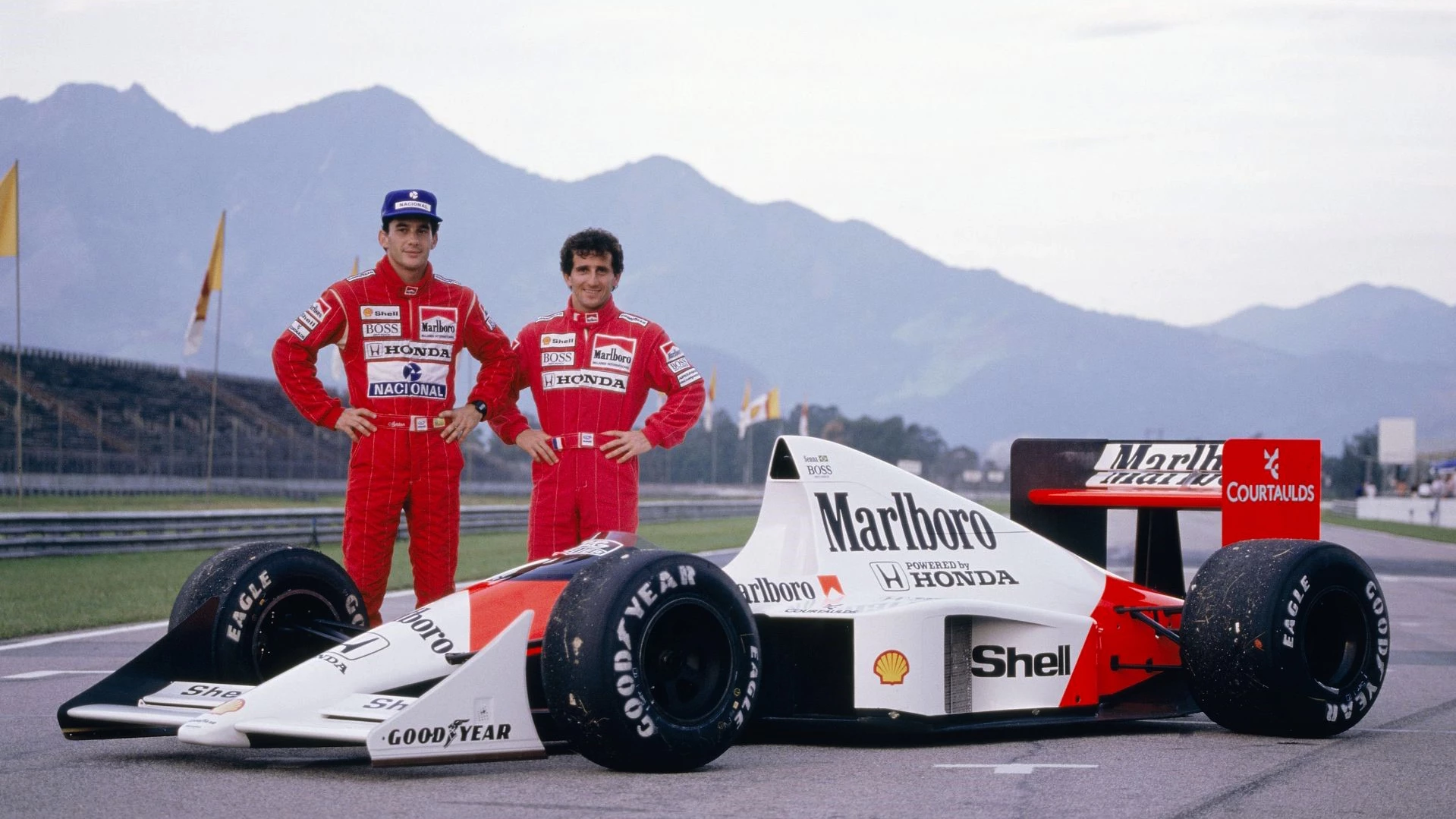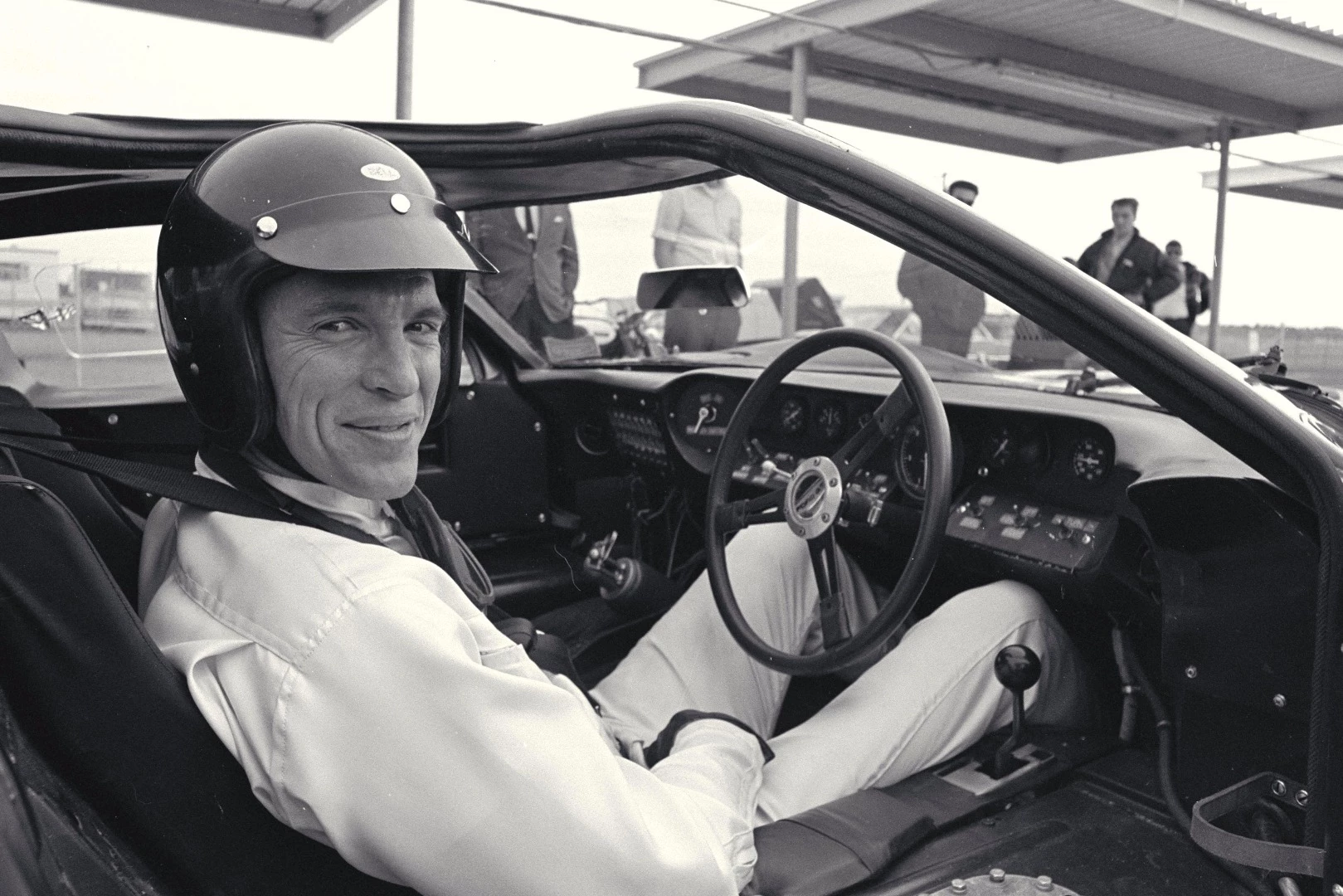Mathematics is the language of the universe, and given the exponential growth of computing power and advanced modeling techniques, it is beginning to make sense of even the most complex of problems.
A new academic research paper (entitled Formula for success: Multilevel modelling of Formula One Driver and Constructor performance, 1950–2014) published by a team from the Sheffield Methods Institute at the University of Sheffield in the UK offers some remarkable insights into the world of Formula One through advanced mathematical modeling.
The Sheffield team set out to answer three inter-related questions:
1. What percentage of car-driver performance is contributed by the driver and what percentage is contributed by the car/team?
2. How do the percentages in #1 vary for different types of circuits and weather?
3. Who are best individual drivers of all time, in order of the difference they made to performance?
The research has produced a top 50 best drivers list which, unlike all previous such lists, is not based solely on opinions or results statistics. In simple terms, advanced modeling has been used to assess the relative performance of the individual cars and teams each year, then taken that into account in assessing each driver's performance over his F1 career. The old adage that "first you beat your teammate" has never been truer.
The official explanation and its effects are illustrated by the graphic from the University of Sheffield above, which uses some well known drivers as examples. The ups and downs of some of motor racings biggest names are detailed in the text below, and there are some big surprises.
Motorsport aficionados have long known that performance is more about the car than the driver, and that more often than not, the "drive of the race" is not from the winner in the fastest, best handling car, but the guy who wrestled an underpowered wheelbarrow-full-of-walruses into tenth.
Way back when he was driving for Williams, Mercedes-Benz F1 and world-champion-elect Nico Rosberg produced the most accurate reflection on the relative contributions of car and driver when he said: ''The difference between each driver in Formula 1, from the best to the worst, is about 0.3 seconds a lap. From the best car to the worst car, I guess it's two seconds or one and a half seconds ... so make a percentage with that ... 20 percent driver, and 80 percent car.''
Rosberg's analysis turns out to be somewhat of an understatement compared to what the random-coefficient modeling research from Sheffield Methods Institute found.
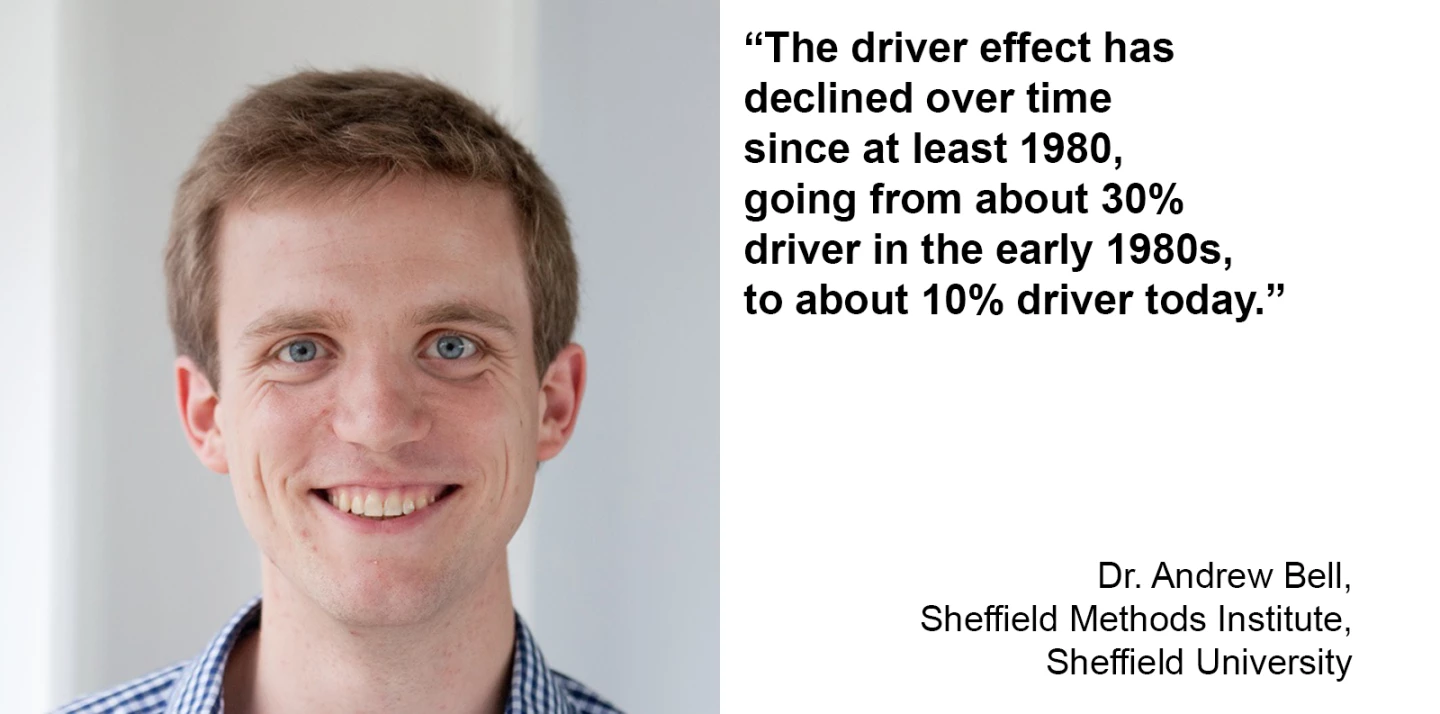
In regard to this specific question, Dr. Andrew Bell who headed the team, says that on average over the period 1979 to 2014, 86 percent of the performance of a driver/car combination stems from the car/team and 14 percent from the driver.
We asked Dr. Bell how that influence had changed over time and his answer suggests that it is becoming increasingly about the car and less about the driver.
"We didn't look at the data before 1979, for various reasons, but mainly that it becomes harder to define teams the further you go back. The driver effect has declined over time since at least 1980, going from about 30 percent driver in the early 1980s to about 10 percent driver today."
So while the public's perception might be that the best driver wins the race, it has been commonly acknowledged within the management of race teams for many years that the driver counts for very little. The reason race teams want the best drivers is that they are marginally better than very good drivers, but neither will win unless they have the right car underneath them. McLaren's hard-headed team principal of the 1970s was American lawyer Teddy Mayer, who famously said at that time: "Drivers are just interchangeable light bulbs – you plug them in and they do the job."
Formula One is the most technologically advanced sporting contest humans have yet devised. The top teams measure each suspension deflection, each microliter of fuel used, the temperature of all main components, every instantaneous acceleration in any direction, ad infinitum, and the data from each car is piped across the world to the team's headquarters (usually in Northamptonshire, UK) every time one of the team's cars is on the track. When a team car is on track, every possible variable is captured, and the dozens of team members sitting in front of computer screens at the circuit are joined by hundreds more, all monitoring and analyzing in real time exactly what is happening, so that everything can be optimized as soon as possible.
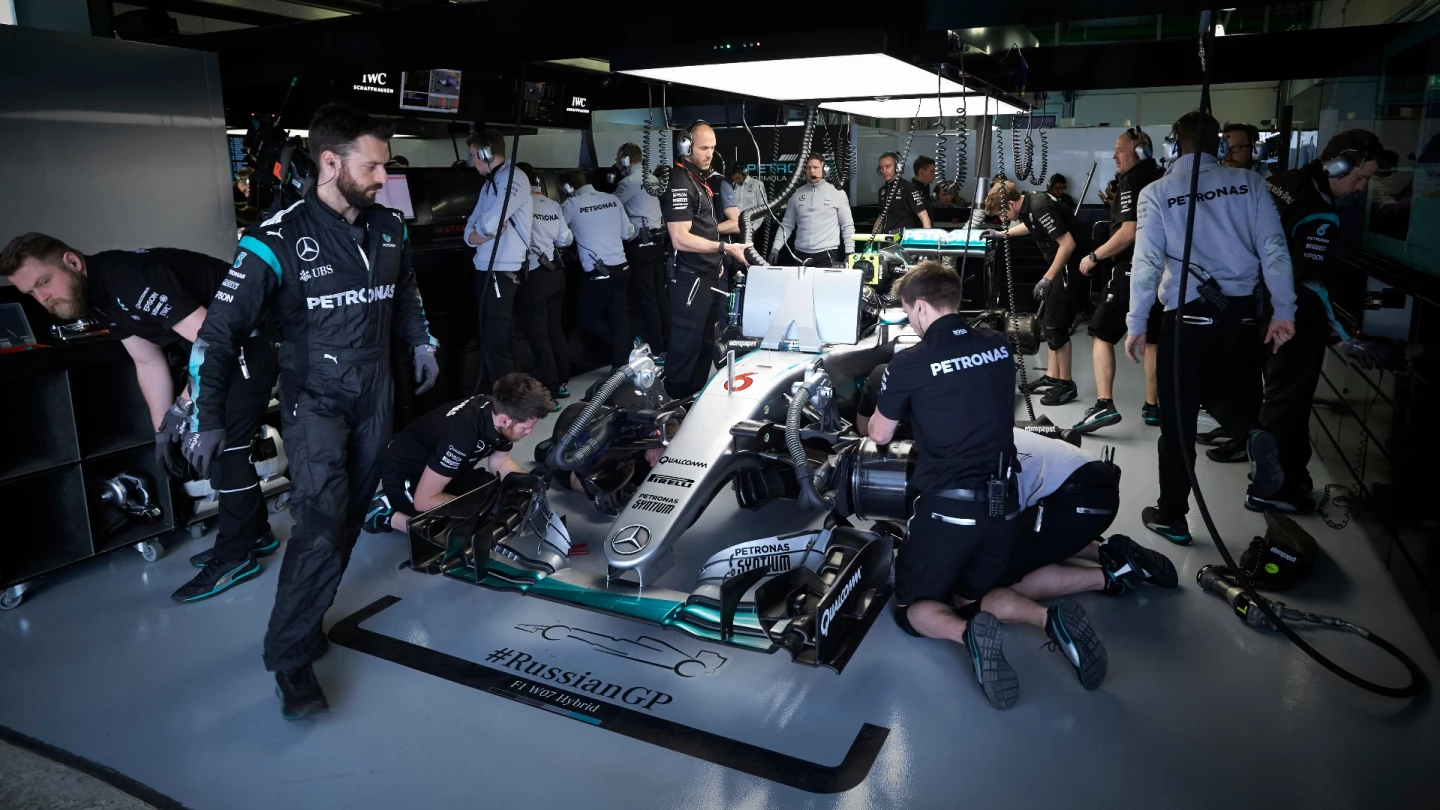
Additionally, while every race is in progress, massive computer simulations are being run for every possible scenario so the strategists can make bigger decisions on important matters such as when the ideal time to pit might be to gain some clear space on track, or to undercut the driver in front who is proving difficult to pass. Those simulations involve not just what the team cars are doing, but everyone else too. Mum, this is as serious as it gets.
Former McLaren Chief Executive Martin Whitmarsh moved to the Formula One team direct from British Aerospace, where he was manufacturing director of combat aircraft such as the Harrier and Hawk. Whitmarsh has participated at the elite level in mankind's two most information-intensive exercises, and he told me in an interview a decade ago that the closest analogy to Formula One in terms of real-time actionable big data analysis was the "battlespace."
"The only difference between Formula One and the battlespace," he said with a smile, "is that in Formula One, no-one is shooting at you."

All the leading F1 teams already undertake detailed statisticalanalysis of the big data available to them, but that data and the knowledge it yields are closely guarded as they are part of the team's IP, which is what makes this paper so refreshing. It is one of very few to offer systematic statisticalanalysis of one the world's biggest sporting contests. Behind the World Cup for football and the Summer Olympic games, Formula One is the world's most watched sporting television event – happening 19 times a year, instead of once every four years.
The paper uses cross-classified multilevel models toproduce a more complete picture of what influences performancein F1 races than has ever been available publicly prior to now, as well as producing rankings of F1drivers that controls for the influence of teams and partitions variance to see the extent to whichteams and drivers matter.
The paper concludes that "certain teams have more funds, are able to employ the best engineers, statisticians and tacticians, and use more advanced technology than other teams" and hence a significant amount of the team performance is consistent over time.

The highest ranked team in the statistical model for the entire 65-year period is Ferrari, and the above photograph from the launch of the Ferrari F2002 car (in 2002) highlights just what level of expertise a leading team can assemble to perpetuate the team effect. Statistically, the Ferrari F2002 was one of the most dominant cars in Formula One history. That year, Ferrari led 82.1 percent (895 of 1090) racing laps in the entire season, a figure only exceeded for one season by the pairing of Senna and Prost in the McLaren MP4/4 of 1988 (1003 of 1031 laps for 97.3 percent), the 1992 Williams Renault of Mansell and Patrese (867 of 1036 for 83.7 percent) and the 2014 Mercedes Benz of Hamilton and Rosberg (978 of 1134 for 86.2 percent). The only team to have achieved sustained success at anything like that level is the current Mercedes team, which has led 2101 of 2506 laps since the beginning of 2014 for 83.8 percent (including the first four races of 2016).
The dream team of talent at the launch of the F2002 is from left to right: Ross Brawn (a key role in eight constructors' championships and eight drivers' championships including subsequently his own championship-winning team), reserve driver Luca Badoer, driver Rubens Barrichello, Jean Todt (now FIA president but a spectacularly successful career including a key role in four WRC championships, four Paris-Dakar wins, two Le Mans 24 Hour wins, and 14 F1 championships - seven constructor and seven drivers titles), Ferrari Chairman Luca di Montezemolo, driver Michael Schumacher, F2002 designer Rory Byrne (whose cars won 99 Grands Prix, seven constructor titles and seven drivers titles), Paolo Martinelli (head of Scuderia Ferrari Engine Department from 1994 to 2006, six constructor titles and five drivers titles), and then Fiat Chairman and CEO, Paolo Cantarella.

The Mathematical modeling
While there will no doubt be some disagreement with the results produced by the landmark modeling paper, Dr. Bell is welcoming of the criticism.
"Usually academic papers don't get picked up by the media at all, so it's nice to have even some news organizations running the story. What is nice, if you look on internet discussion forums, is that you'll see a lot of discussion about it and lots of people disagreeing with it, which is exactly as it should be," said Bell, acknowledging that scientific progress requires rigorous debate.
"There are however, also lots of people discussing the methodology and discussing confidence intervals and other aspects of the modeling, which for me as a methodologist, I find really exciting. Often it's difficult to get people talking about that. They see it as something that statisticians do and not something they need to worry about, whereas when it's an issue that's very important to so many people, such as who is the world's greatest Formula One driver, you get people digging into the statistics and actually reading the paper and understanding what we've done. It's healthy for everyone."
Dr Bell hopes the innovative mathematical methodology his team developed will be used in other ways. "Motor racing and cycling are the main sports where there is the dual team and individual competition simultaneously, so this methodology is particularly suited to those sports," he said.
"Potentially it might be taken forward by major car, motorcycle or bike racing teams seeking out the drivers or riders with the most potential from feeder series so they can recruit the most talented drivers for their teams. It would involve collecting a lot of data from the feeder series, but I would imagine that the more professional race teams would have much of that data to hand or readily available to them anyway.
"Interestingly, I got an email from one chap who works in the informatics area for the chemical or drug industry, and he said he would be able to use this methodology for working out what different properties in chemicals were the most important and relevant for drug companies.
"It's sometimes amazing to see the different directions a new methodology can end up taking you."
Other potential uses of the methodology include how much individuals, teams and companies affect worker productivity or how much classes, schools and neighborhoods affect educational achievement.
Schumacher's ranking relates only to the period 1991-2006

No-one disputes that the Michael Schumacher we saw in the period 2010–2012 was not performing at the same level as the driver we saw from 1991 until his first retirement in 2006. His decision to come out of retirement and race uncompetitively for three years dropped his ranking to ninth of the all-time greats, so the analysis was done in two different ways: including all of his results (which places him in ninth) and ignoring his post-2010 results (which places him third best of all time). The rankings in the rest of this article take the results from the latter analysis."
When the going gets tough: The world's best wet weather drivers
It may be one of those 2020 hindsight statements, but obviously when a track is bumpy or narrow or wet, having superhuman reflexes, exquisite feel, a big heart and great faith in your abilities count much moreso, and the analysis enabled those drivers that performed better on wet circuits than they did in the dry to be graded. Not surprisingly, Fangio was even better in the rain than he was in the dry.

Indeed, Fangio was untouchable in the wet, and the rankings and driver residuals for wet weather performance reflect a considerable gap to second-placed Michael Schumacher and third-placed Ayrton Senna, who both demonstrated "rainmeister" status countless times, including some breathtaking performances in the modern era where television ensured the world could see their mastery. Fans will fondly remember both Senna's sublime drive into second place in the controversial rain-soaked 1984 Monaco Grand Prix and Schumacher's first win for Ferrari in torrential rain at the Circuit de Catalunya in 1996, where he lapped three seconds faster than anyone and won by 45 seconds. Sadly, we never saw Fangio at his best.
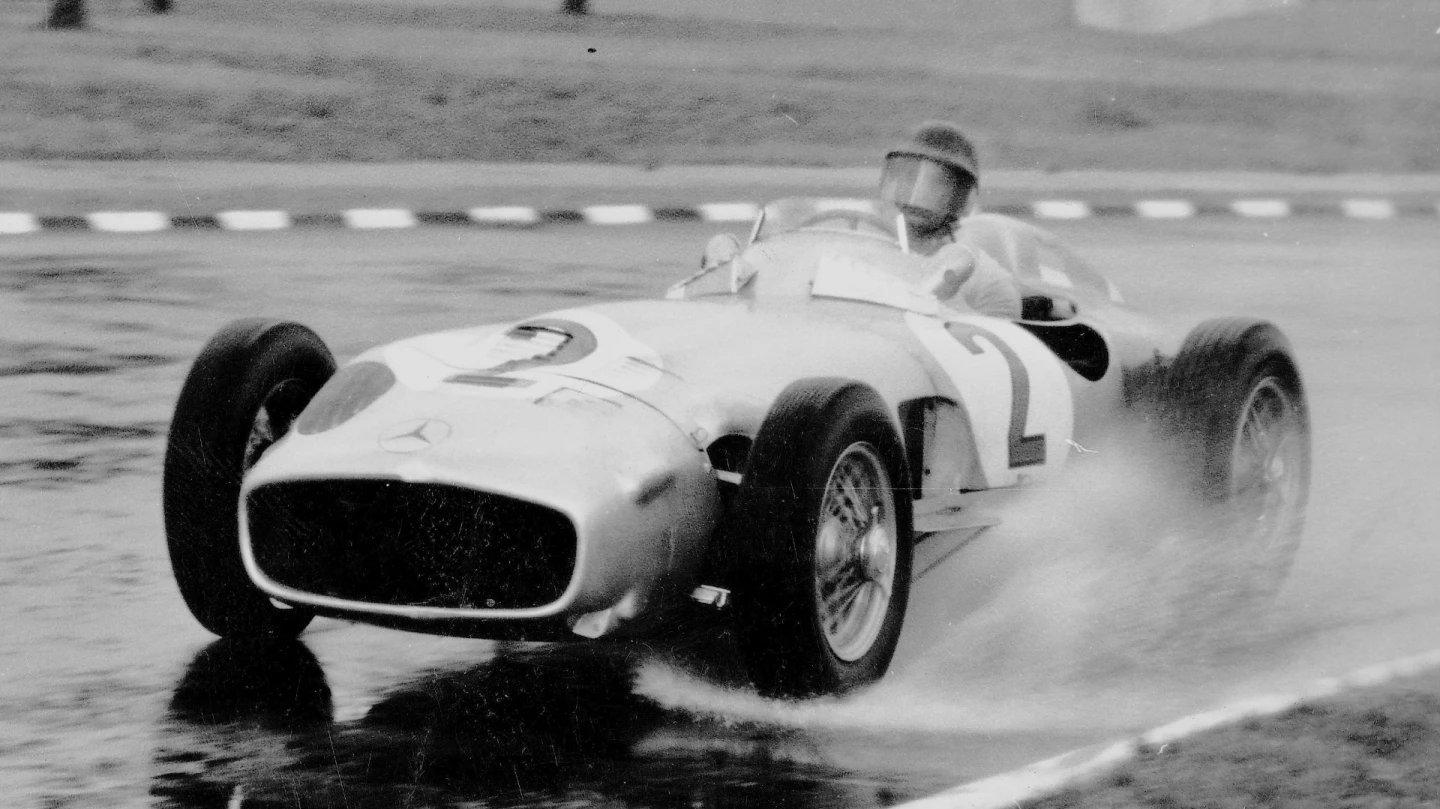
Alain Prost and Jim Clark came fourth and fifth in the wet weather rankings, with scores only marginally behind Schumacher and Senna, with the scores dropping away considerably through Fernando Alonso, Nelson Piquet, Jackie Stewart, Emerson Fittipaldi to tenth placed Sebastian Vettel.
Street circuits: No margin for error
Street circuits are the ultimate challenge because there is absolutely no room for error: the racetrack ends with a bang. It hence requires a special driver to commit to blind corners on the limit at speed knowing that the slightest miscalculation will end in tears, and an even more special one to do it lap after lap, year after year, getting it right every time. Not surprisingly, Fangio was easily the highest ranked driver on street circuits, with a huge margin to second place. Ayrton Senna, Fernando Alonso, Alain Prost and Jackie Stewart all scored closely but in that order for the second best ever.
The scores then took a major step down to Jim Clark, Michael Schumacher, Emerson Fittipaldi and Nelson Piquet. Apart from Alonso, several other current day drivers scored well in this category, with Vettel in eleventh, Lewis Hamilton in twelfth and Jenson Button in fourteenth. Roll on Monaco.

The length of the lines is an indication of the confidence intervals, not a variation in performance (i.e. drivers in the fifties and sixties had less races per season, so the amount of available data is understandably less).
The top 50 drivers of all time
Finally, we get to the rankings based on the residual values of the drivers. In any reassessment of well-established rankings, there are going to be winners and losers and no doubt these rankings will create controversy. The reason a driver has been elevated to exalted status in these rankings is to put it simply, due to consistent exceptional performances in cars and teams where others fared less well. Those drivers who have fared poorly in these rankings compared to their stellar tally of wins, poles, fastest laps and podiums, have done so because they spent a large part of their career in exceptional cars and teams and performed less well than others who were similarly blessed.

The top 20 you'll already have seen from the main graphic for the article but we've included, for comparison purposes, the key performance indicators usually associated with the greatest of all time. We've also included current day drivers in yellow.
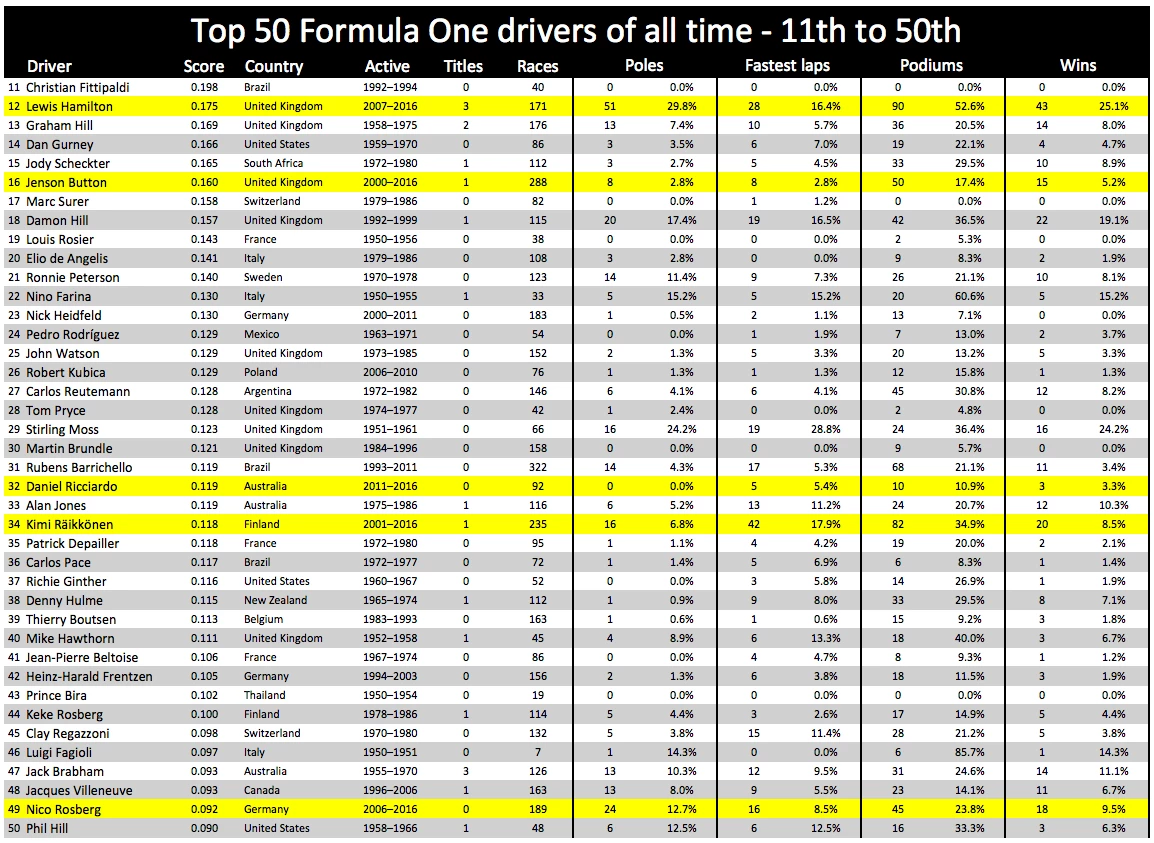
Title winners who didn't make the top 50
In any realignment, there are going to be winners and losers, and we don't want to dwell on those whose achievements have been discounted because they have always had great drives with fast cars and good teams. The listing below is of the obvious absentees from the top 50.

Rather than focussing on the "big losers" in this analysis, it's worth considering the unsung heroes that the analysis has highlighted. These are the drivers who never got to sit in one of the very few seats capable of delivering a title or even a single win.
The unsung heroes

There are seven drivers in this top 50 drivers of all time, who never won an F1 race. The highest is 11th-placed Brazilian Christian Fittipaldi (top left in above image). The Brazilian drove in 40 races over three years (the 1992, 1993 and 1994 seasons), and never once stood on the podium, yet when you look at the cars he drove, his three fourth places, a fifth and a sixth take on much greater significance. He is the son of former Grand Prix driver and team owner Wilson Fittipaldi, and the nephew of two-time Formula One Champion and Indianapolis 500 winner Emerson Fittipaldi, who placed ninth on this list.
The other big winner in terms of being included towards the top of the list without ever having stood on a podium was 17th placed Swiss journeyman Marc Surer. Statistically, his only claim to fame was one fastest lap, yet over a career that spanned eight years (1979, 1980, 1981, 1982, 1983, 1984, 1985 and 1986) he never once found himself in a car that matched his talents, scoring just 17 championship points. It's worth clicking those championship links to see some of the remarkable performances he achieved from the rear of the grid though.
Others who drove the wheels off their underperforming cars include Frenchman Louis Rosier (bottom left in the image above), who was graded 19th best of all-time, with just two podiums and 18 championship points. Rosier began his Formula One career at 45 years of age as many post-war racers did, and lasted until his early fifties, encompassing 1950, 1951, 1952, 1953, 1954, 1955, and 1956 (click those links to see his performances). His best recognized performances were in non-championship events including winning the Dutch Grand Prix twice before it was granted championship status, and the 24 Hours of Le Mans with his son Jean-Louis Rosier.
The list of the unacknowledged greats goes on for quite some distance. Nick Heidfeld (second from left on bottom row in the above image) will no doubt be remembered for his recent 12-year career with Prost, Sauber, Jordan, Williams, BMW Sauber and Renault, but at the end of the day, all he had to lay claim to greatness were 13 podiums, one pole position and two fastest laps. Nick's career has continued with WEC and Formula E, so we hope he gets luckier.
Tom Pryce (middle bottom row in the above image) was a great wet weather driver and one who may have become one of the recognized greats if his life had not been cut short at just 27 years of age in a racing accident in the 1977 South African Grand Prix.
Martin Brundle (fourth on bottom row above image) is best known these days for his "grid walks" as a Formula One TV commentator but his results and the analysis suggest his failure to win a Formula One race had nothing to do with his ability to drive.
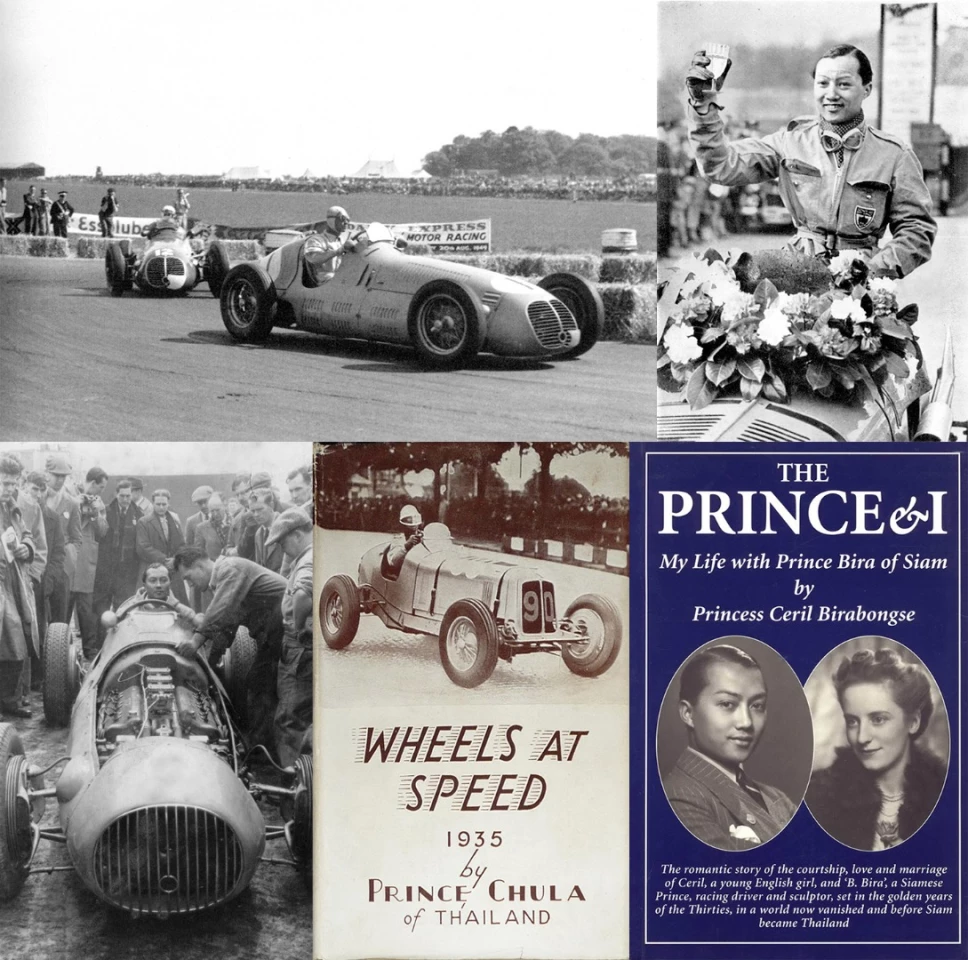
The final top 50 driver never to win a race was one of the world's last great "gentleman drivers", Prince Bira (Birabongse Bhanutej Bhanubandh) of Thailand. Very wealthy drivers who could buy the best of the best and go racing were commonplace in the period between the World Wars, and Ferrari's business was built on providing race cars to such clients post-war. But Bira's standing in these rankings signifies a truly great talent well beyond his financial means and gregarious personality.
Bira was the grand-son of Thailand's King Mongkut, the character loosely portrayed in the Rogers & Hammerstein's stage musical The King and I, the 1956 feature film The King and I, and the 1999 feature film, Anna and the King. Like his celebrated grandfather, the Prince was a man of many talents, studying at Eton, becoming an accomplished sculptor, representing Thailand in sailing in four Olympic Games (Melbourne 1956, Rome 1960, Tokyo 1964 and the 1972 Munich Olympics, where he competed at 58 years of age), producing numerous books and films, and motor racing successfully at the elite level from the mid 1930s (winning the British Racing Drivers Club Gold Star in 1936, 1937 and 1938) until the mid-1950s. He also acted as a flying instructor for the British RAF during WW2 as his country was occupied. His Formula One career lasted from 1950, through 1951, 1952, 1953, 1954 and 1955. There's also an excellent two-part feature on Prince Bira at VivaF1 and another well-researched feature at Historic Racing.
Robert Kubica is the highest placed of five drivers (Kubica, Carlos Pace, Richie Ginther, Jean-Pierre Beltoise and Luigi Fagioli) who won just one Grand Prix yet whose results, when balanced against the cars they drove and teams they drove for, propelled them into the best 50 drivers of all time.
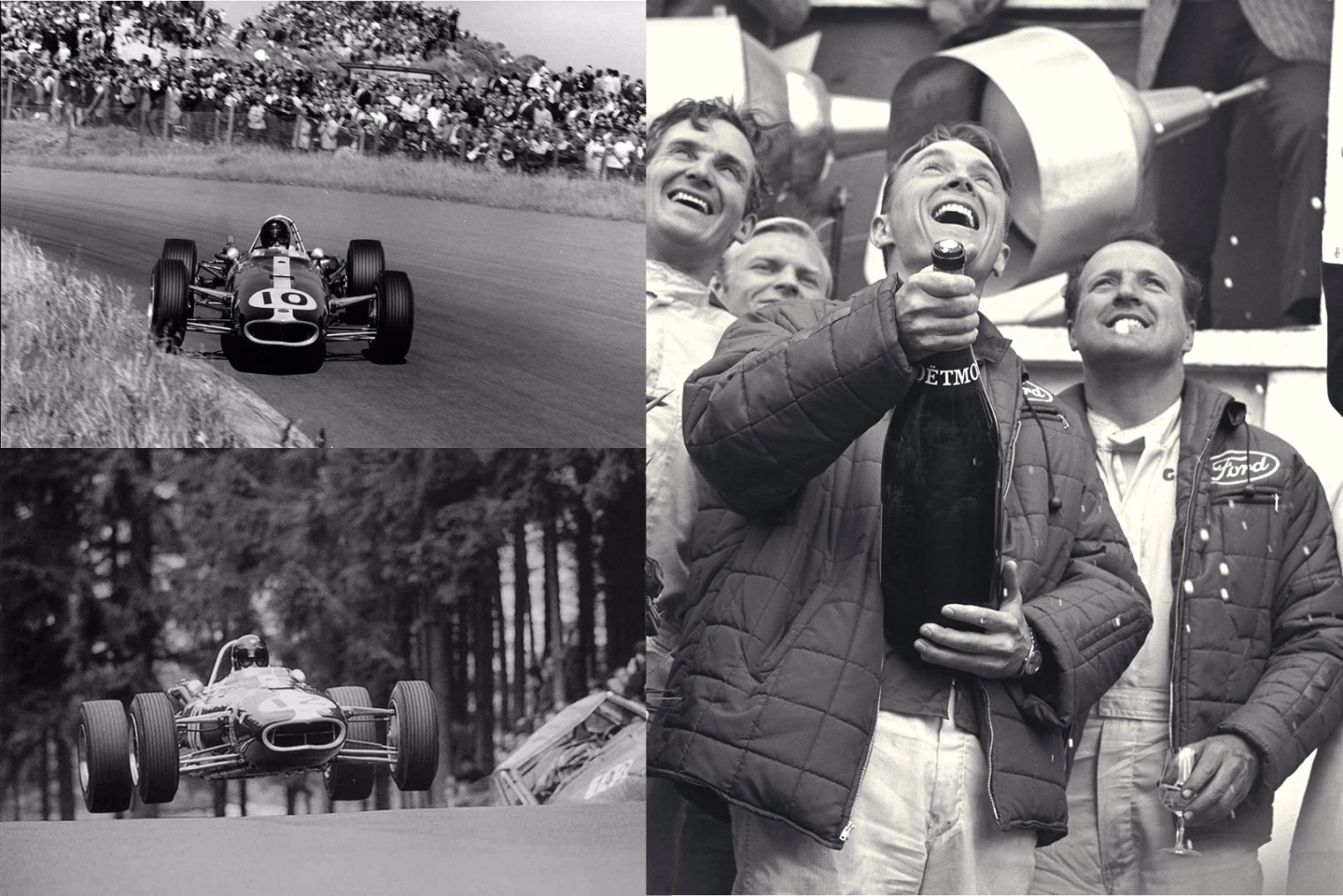
Dan Gurney - motorsport polymath
Only 32 human beings have ever won a world F1 title, yet there are 26 drivers in this top 50 listing who didn't win a title and the highest placed other than the aforementioned Christian Fittipaldi is the popular American driver, constructor, engineer and inventor Dan Gurney.
Gurney only won four F1 races, but his influence on motor racing has been immense on so many different levels. He has successfully played the role of team owner, designer and driver successfully at the highest levels, winning races as a driver in Formula One, NASCAR, Indy Car and the Le Mans 24 Hour Race, and he is one of only two people to win a Formula One race with a car of his own design (47th-placed Aussie Jack Brabham was the other). By placing fourteenth in this ranking of the best ever, he strengthens his grip on the title of "motorsport polymath." From his own All American Racer, aerodynamic innovation (the Gurney flap), through his unconventional sit-in Alligator motorcycle, to his most recent invention of a moment-canceling engine, Gurney has never stopped thinking about ways to make a better mousetrap.
Gurney has another endearing element: a cavalier charisma highlighted by his win in the original, no-holds-barred, outlaw road-race, the Cannonball Run. The 1971 Cannonball Baker Sea-to-Shining Sea Memorial Trophy Dash was the public roads race that inspired the films, created an international outcry and will be forever enshrined in hotrod culture legend.

The initial record set by Gurney and motorsport journalist Brock Yates for the 2,900 miles on public roads was 35 hours, 54 minutes (an average of 80 miles per hour including petrol and food stops in a Daytona Ferrari), and it was only broken in the fourth and final Cannonball Run in 1979. Gurney was quoted after the event as saying, "at no time did I exceed 175 mph."
Finally, it was Gurney who in 1967 began the tradition of spraying champagne on the podium after winning the Le Mans 24 Hour Race and ... we're glad Dan fared well in this listing because he somehow captures the spirit of the sport.
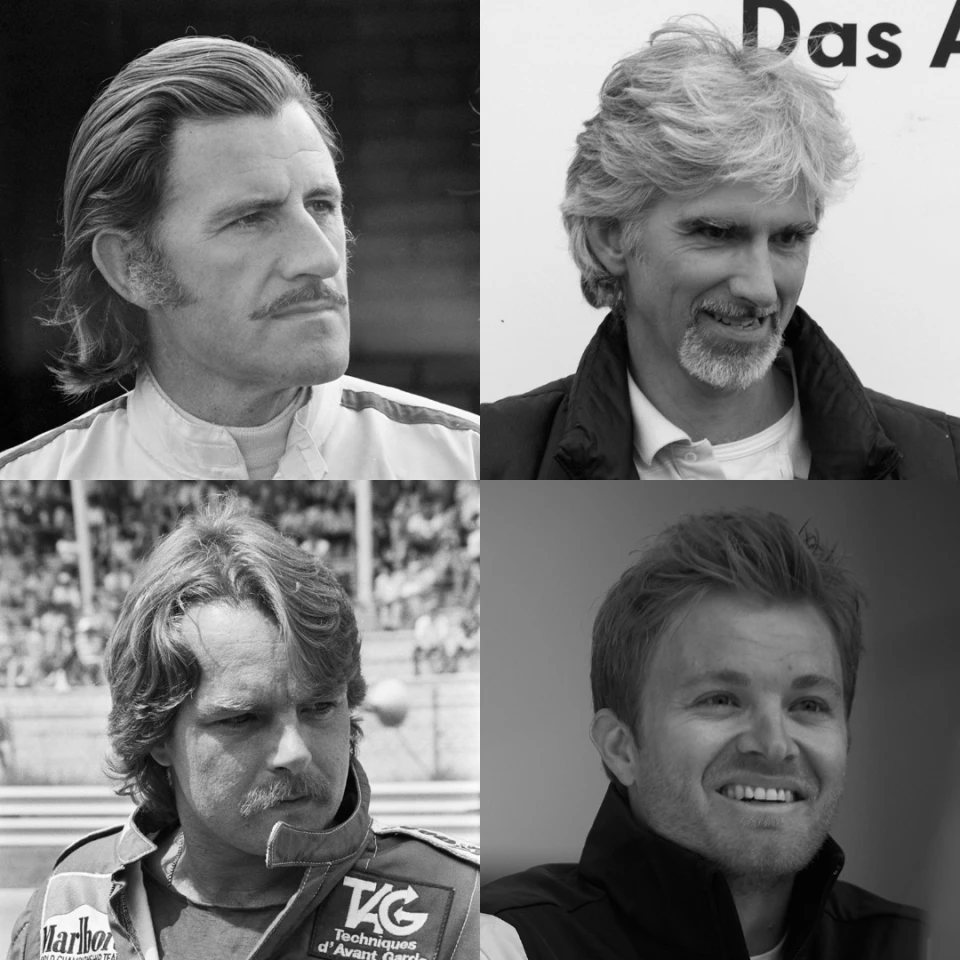
Good genes
We've already mentioned the Fittipaldis (ninth-placed Emerson is the cousin of eleventh-place Christian), but there are two father-son combinations in the top 50 too (Graham and Damon Hill and Keke and Nico Rosberg), with the fathers ahead of the sons in both cases, though there's every possibility Nico might even the score if he keeps winning races at his current rate.
So there you have it – let the debate begin.
